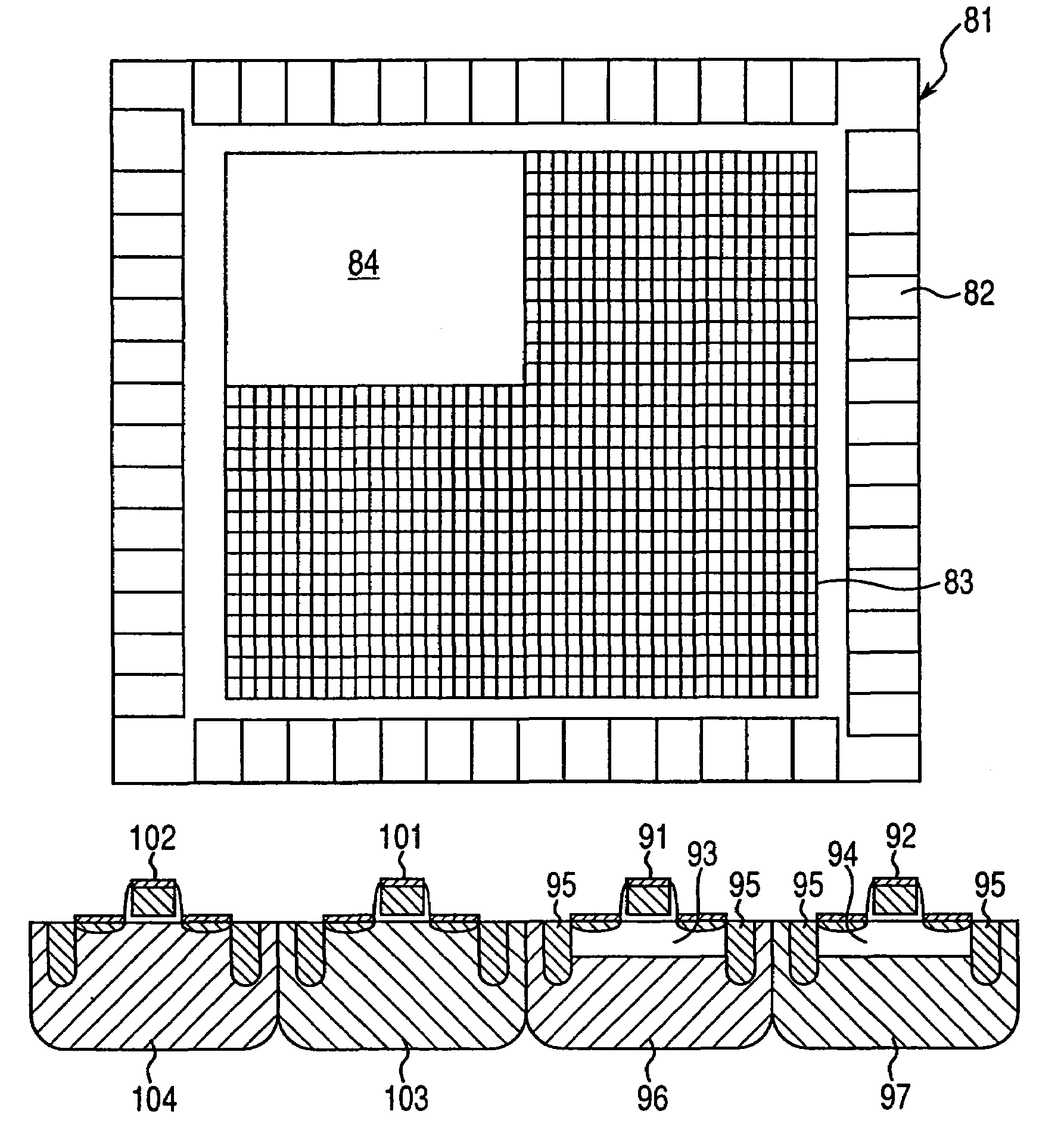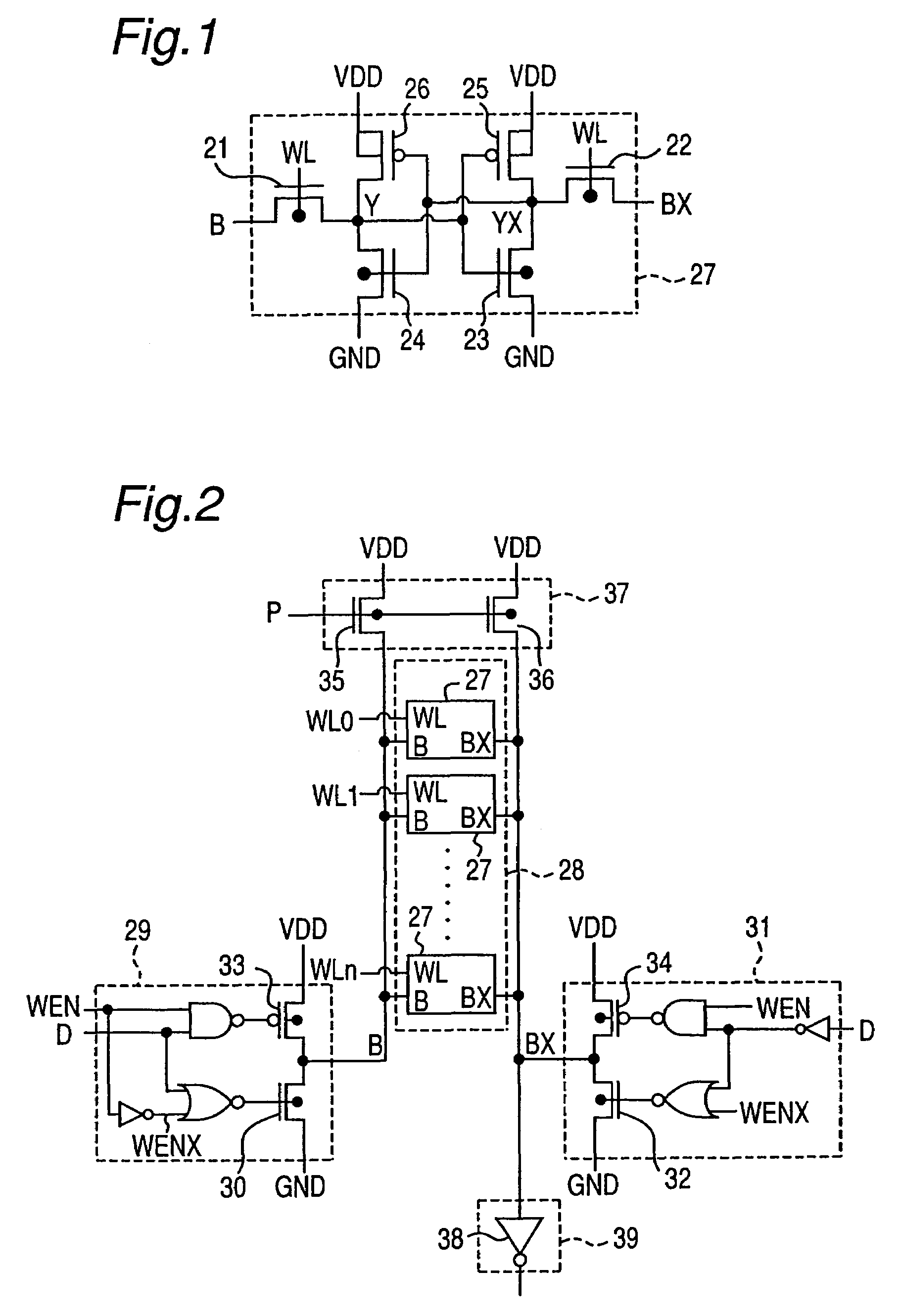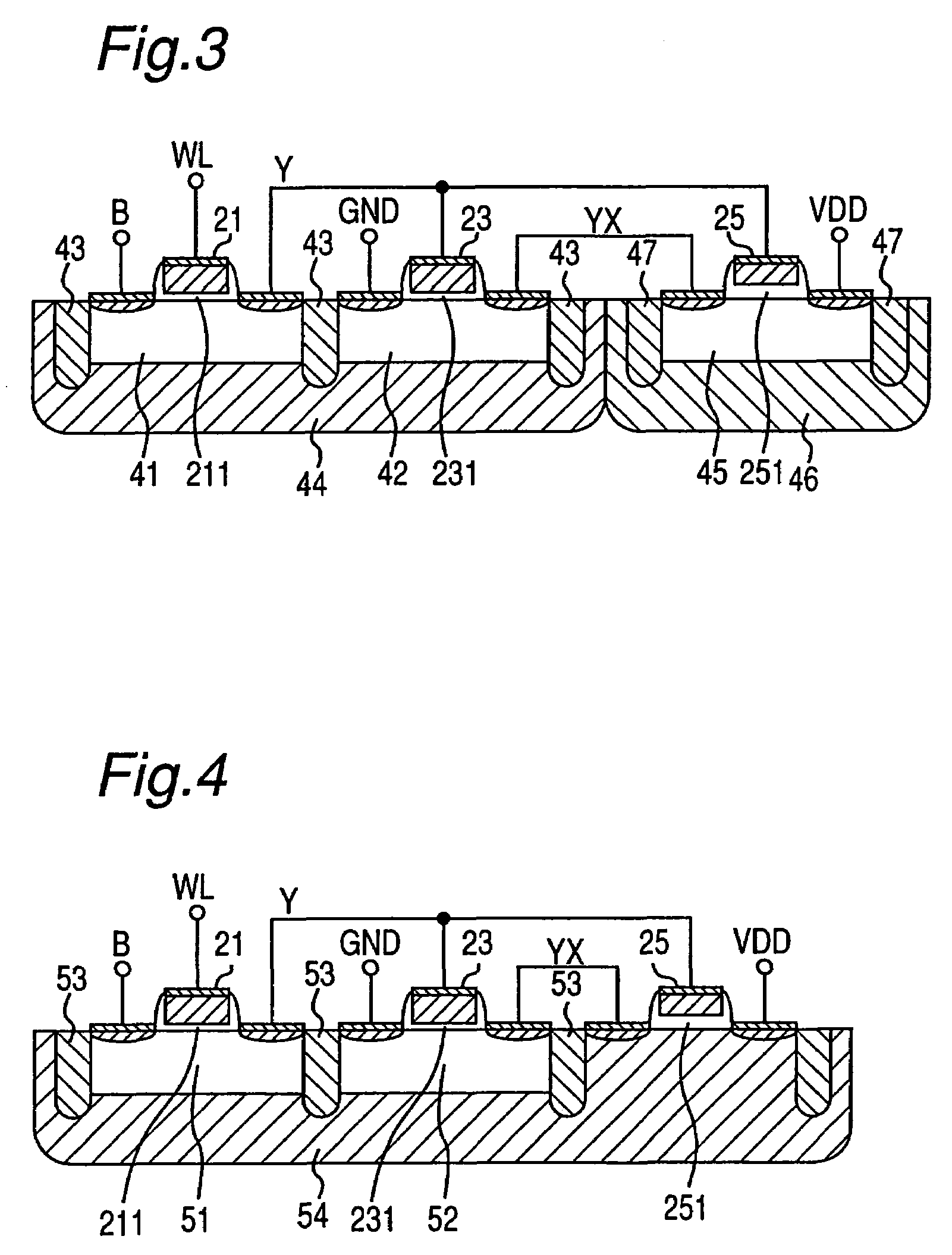Static random access memory and semiconductor device using MOS transistors having channel region electrically connected with gate
a random access memory and gate technology, applied in transistors, solid-state devices, instruments, etc., can solve the problems of reduced operating speed, increased power consumption, increased cost, etc., and achieve high electrostatic withstand voltage and high reliability of semiconductors
- Summary
- Abstract
- Description
- Claims
- Application Information
AI Technical Summary
Benefits of technology
Problems solved by technology
Method used
Image
Examples
Embodiment Construction
[0040]The present invention will be described in detail below on the basis of the embodiments shown in the drawings. FIG. 1 is a circuit diagram showing an example of SRAM cells of the SRAM according to the present embodiment. The SRAM cell 27 in the present embodiment is also constructed of two PMOS transistors and four NMOS transistors.
[0041]A bit line B is connected to the source (drain) of a first NMOS transistor 21. A word line WL is connected to the gates of the first NMOS transistor 21 and a second NMOS transistor 22. An inverted bit line BX is connected to the source (drain) of the second NMOS transistor 22.
[0042]The drain (source) Y that belongs to the first NMOS transistor 21 and is not connected to the bit line B is connected to the gates of a third NMOS transistor 23 and a first PMOS transistor 25 and further connected to the drains of a fourth NMOS transistor 24 and a second PMOS transistor 26.
[0043]The drain (source) XY that belongs to the second NMOS transistor 22 and...
PUM
 Login to View More
Login to View More Abstract
Description
Claims
Application Information
 Login to View More
Login to View More - R&D
- Intellectual Property
- Life Sciences
- Materials
- Tech Scout
- Unparalleled Data Quality
- Higher Quality Content
- 60% Fewer Hallucinations
Browse by: Latest US Patents, China's latest patents, Technical Efficacy Thesaurus, Application Domain, Technology Topic, Popular Technical Reports.
© 2025 PatSnap. All rights reserved.Legal|Privacy policy|Modern Slavery Act Transparency Statement|Sitemap|About US| Contact US: help@patsnap.com



